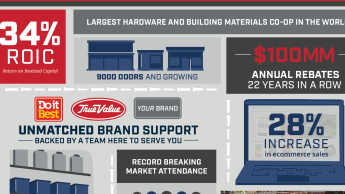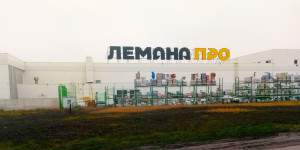Have you ever wondered how you compare with some of the best retailers in the world?
We are also providing some of the same statistics for 3 major retail chains operating so-called “dollar stores,” which concentrate on serving low- and middle-income consumers with low priced items. Dollar Tree is the only one of the three which sells all products for US $ 1. The other two sell for US $ 1, 2, 3 or 5, and under US $ 10.
A financial look
-Mart, the world’s largest retailer, achieved sales of US $ 256.3 bn, far ahead of Target, America’s second largest mass merchandiser. Wal-Mart has made a much bigger commitment to food retailing via its super centres, though Target also operates such stores and seems to be planning more units with food departments in 2005.
Last year, both achieved about the same overall sales increase. Wal-Mart has always advertised its everyday low prices, and this appears to be a justifiable promise inasmuch as its gross margin is only 22.3 per cent, compared to Target’s 31.2 percent. Part of that would be attributable to Wal-Mart’s larger food sales, but not all - a difference of nearly 9 per cent is significant.
Its SGA (selling, general and administrative) expense ratio is also lower. Target edges Wal-Mart in net profits, however.
What is most interesting is the fact that both Home Depot and Lowe’s are today operating with much higher overall gross margins than these two mass merchandisers - and even higher than Tractor Supply, which sells only hardlines as they do.
Both Home Depot and Lowe’s have been gradually increasing gross margins over the last several years - Depot aggressively under the management of Bob Nardelli, who replaced Arthur Blank, one of the founders. Under Blank and, earlier, Bernie Marcus, the other founder, the company’s gross margin was consistently around 27 to 27.5 per cent. It was those low gross margins which enabled Depot to wreak havoc in the hardware/home centre industry, putting many older, higher-margin firms out of business.
The higher gross margins of both firms now make it a bit easier for other firms to compete with them, as the price-gap narrows. Menards, America’s third-largest chain, which is privately owned, consistently beats the other two on everyday low prices, according to many industry observers.
Menards produces an estimated US $ 7 bn in sales out of its 205 stores, which means it averages about US $ 34 mio per unit. Its newer stores are larger than those of either Depot or Lowe’s, with some as large as 22 300 m². This means sales per m² would be lower than those of Depot and Lowe’s. Other statistics for Menards are not available.
Perhaps the most interesting figure of all in the financial spreadsheet is that the net profits of both home centre groups vastly exceed those of the three other large retailers - 10.8 per cent for Depot and 9.7 per cent for Lowe’s.
Download: Operational statistics (PDF file)

 Menü
Menü
















